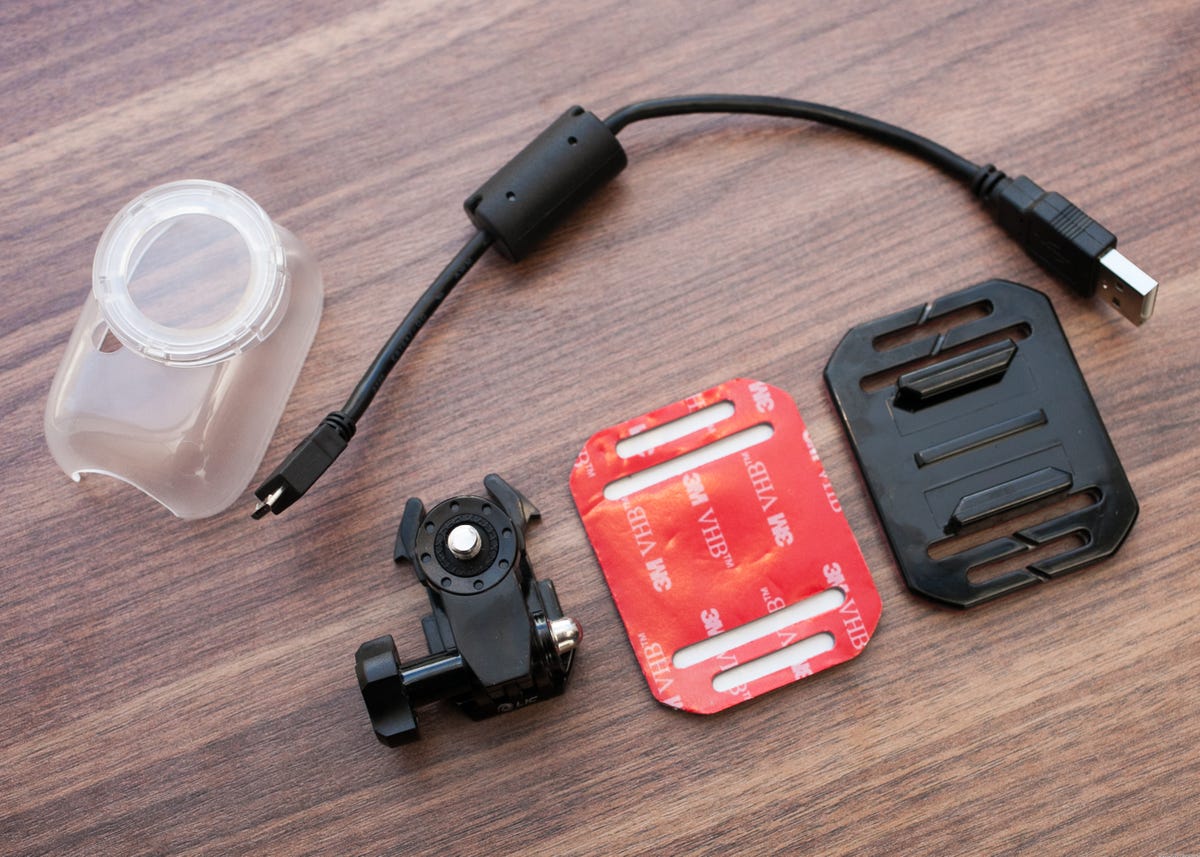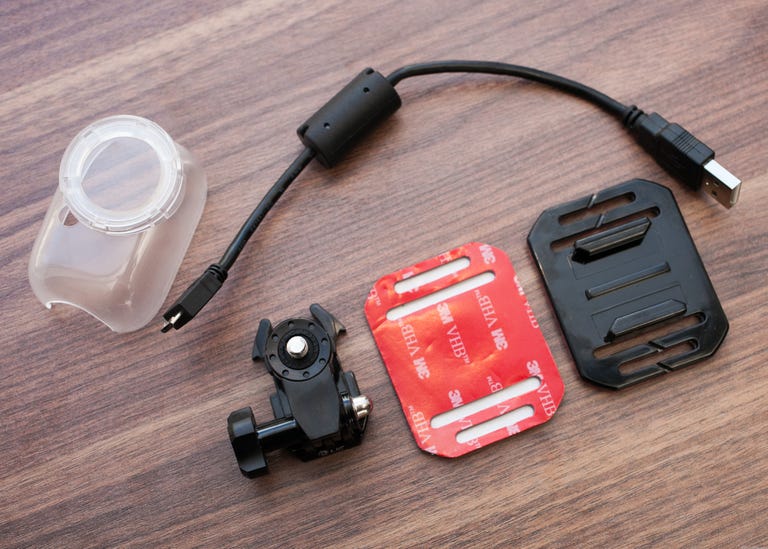 Why You Can Trust CNET
Why You Can Trust CNET Liquid Image Ego review: Simple, small grab-and-go action cam
The egg-sized Ego captures 1080p HD video and photos, and can be wirelessly controlled with your smartphone, but that's about where its features end.
Unless you're into scuba diving or snow and offroad sports, you may never have heard of Liquid Image, which makes goggles and masks with built-in HD video cameras. Its Ego action cam, however, is meant for use in other sports where mounting is a better option than eyewear.
The Good
The Bad
The Bottom Line
The tiny Ego is one of the smallest POV cameras around; it measures 1.3 inches wide by 1.5 inches deep by 2.5 inches high and weighs just 2.4 ounces. Along with making it easy to travel with, the size and weight are definitely an advantage when it comes to mounting it. And, its shooting options cover just the basics -- it's pretty much just a point-and-shoot video camera -- which is great if you just want to capture some video and move on.
It is, however, Wi-Fi-enabled, and Liquid Image has apps for iOS and Android, which, among other things, give you a live view of what the camera is seeing so you don't have to shoot blindly. Video quality is pretty pleasing, too, especially if your clips are just destined for online sharing.
In the box
Unlike many of the cameras in this category, the Ego comes with very few accessories. You get a short Micro-USB cable, a single adhesive flat mount, an extra adhesive pad, and a snap-on protective face cover to protect it from minor impacts and splashes.

Liquid Image does sell other mounts, but many of them just take advantage of the Ego's quarter-inch tripod mount, so there is no shortage of mounting options available elsewhere. There are a couple of exceptions, though, including a $40 underwater housing that's good down to 130 feet (the Ego is not waterproof on its own) and a body mount system, which can be used to strap the camera to your chest, leg, arm, head, or wrist for $30. But, if you're looking to do more than just stick a camera on something with an adhesive pad, you'll need to spend more money.
Speaking of spending more money, the camera doesn't have any significant amount of memory for video, so you'll need to supply your own MicroSDHC card; it supports cards up to 32GB.
Design and features
The Ego is a cute little thing, that's for sure, and it's available in five colors: blue, white, yellow, red, and black. Again, simplicity is its strong suit and Liquid Image made good use of the space that it had to work with. Pull open its one rubber flap and you'll find the MicroSDHC card slot and Micro-HDMI and Micro-USB.
On the bottom you'll find the tripod mount and four small bumps so that the camera can stand on its own. It would have been nice to have a second threaded mount on the back to allow for more flexibility in mounting, but that's likely not possible considering its size and the internal rechargeable battery. The battery cannot be removed, so when it dies, you're done shooting.
On top are an incredibly small LCD and two buttons. The display can be difficult to read, but thankfully it's not needed for much. One button is for power and changing shooting modes, the other is to start and stop recordings, take photos, and turn on Wi-Fi. A light on front confirms what mode you're shooting in by changing colors and will flash when recording.
The f3.2 lens covers a 135-degree field of view. That's not quite as wide as the 170-degree lenses on other action cams, but it's still plenty wide and has the fish-eye distortion that has become characteristic of the category.
Using the Wi-Fi is easy. Install the app for your mobile device -- iOS and Android versions are available -- and go to your wireless network settings. The camera's Wi-Fi isn't on by default, but you just hold the shutter release for a couple seconds and it turns on. Then you select the Ego in your device's network settings, and they'll connect to each other. Open the app and before too long (on a Droid Razr HD it took about 30 seconds) you'll have a live view from the camera.
With the app, you can preview what you've shot, download clips for viewing or sharing, and change camera settings. You can also use it to remotely take pictures or start a video recording. However, as soon as it starts recording, it kicks you off Wi-Fi, so you must stop the recording with the camera. Also, the app performance was a bit slow on my device, sometimes taking several taps to register selections.
Shooting options
The camera basically has four shooting modes: video captured at resolutions of 1080p at 30 frames per second or 720 at 60fps, and photos taken singly or continuously. The default resolution for photos is 12 megapixels, but that's an interpolated resolution; the camera's sensor is 3 megapixels and you can change it to that or a 5-megapixel setting using the iOS or Android app.
With the app you can also pick exposure modes (Auto, Sunset, Snow, Landscape, and so on); change white balance, contrast, and field of view (135 or 90 degrees); adjust the mic level; and flip the camera's image (in case the camera is mounted upside down). You can also shut off the LED light on front as well as the camera's beeps.
Video quality and peformance
Editors' note: We are currently in the process of testing and reviewing as many of the latest action cameras we can get our hands on. Because of this, the video quality analysis that follows is largely based on our experience with minicamcorders that use similar components to action cameras.
Photo quality is decent, but, as with movies, you'll want to have good light. I wouldn't bother using the 12-megapixel setting and, instead, use the app to drop the resolution to 3 megapixels. The results are much better, on par with a good smartphone camera. The camera does have a continuous shooting mode, however it only captures one frame every 3 seconds.
Battery life, considering how small the camera is, is very good, giving about 2 hours from a single charge. But the battery isn't removable, so you can't just swap it out.
Conclusion
If you want a small, simple action cam, the Liquid Image Ego is a safe bet. If you're looking for a lot of features or accessories out of the box or need it to be waterproof, this isn't for you. It's basically a shoot-and-share minicamcorder that can be mounted and for which you can use your smartphone as a display, though not while you're recording.


